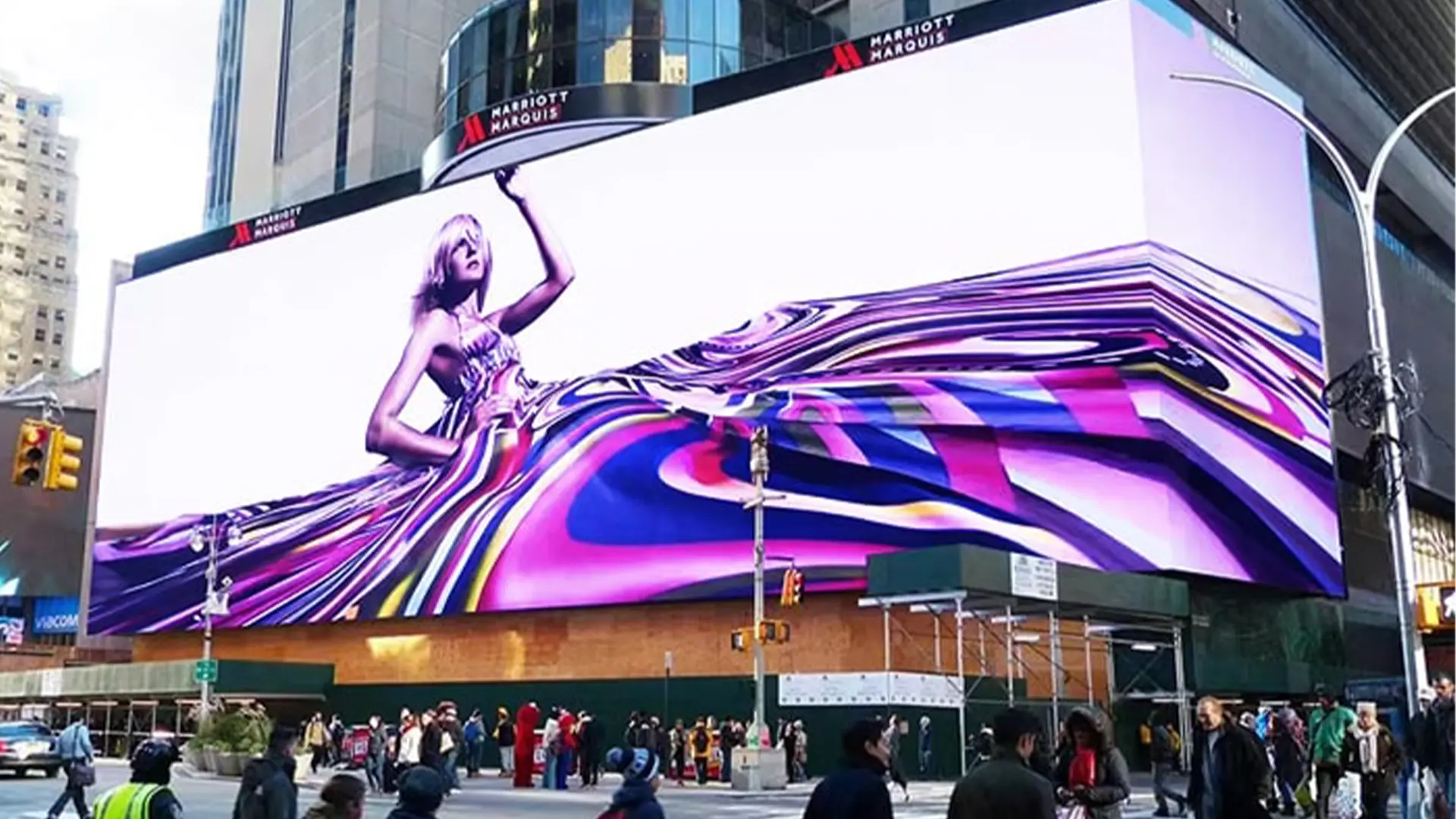
Installing an outdoor LED display requires careful planning, execution, and maintenance to ensure long-term performance and reliability. Below are the most commonly asked questions and expert-recommended answers to guide you through the process.
Before installation, conduct a full site assessment:
Location: Avoid areas prone to strong winds, flooding, or obstructions from nearby structures.
การรองรับโครงสร้าง: Confirm that walls or mounting structures can support at least 1.5 times the total weight of the display.
Power & Network Planning: Ensure dedicated power circuits and plan signal transmission via fiber optic or Ethernet cables.
Weatherproofing: The enclosure must meet at least ระดับการกันน้ำ IP65, and include proper grounding or lightning protection systems.
Select an installation method based on location and application:
Wall-Mounted: Ideal for concrete or brick walls; secure using expansion bolts.
Pole-Mounted: Requires a deep foundation (≥1.5m) for freestanding displays in open areas like plazas.
Suspended: Needs steel support structures; ensure even weight distribution to prevent imbalance.
To protect against moisture:
ใช้waterproof gaskets between modules and apply silicone sealant to seams.
Include drainage holes at the bottom of the cabinet to prevent water accumulation.
Keep power supplies and control cards moisture-resistant or place them in sealed, protective enclosures.
Proper cable management is crucial for safety and performance:
ใช้dedicated circuits for each module or control box to avoid overloading.
Protect power lines with PVC or metal conduits; keep signal cables at least 20cm away from high-voltage wiring.
ติดตั้งsurge protectors on signal lines and ensure ground resistance < 4Ω.
After installation, perform these checks:
การปรับเทียบพิกเซล: Use calibration software to adjust brightness and color uniformity.
การทดสอบความสว่าง: Optimize for daylight visibility (≥5,000 nits recommended during the day).
Signal Test: Verify HDMI/DVI inputs for smooth and stable video playback.
Regular maintenance ensures longevity:
การทำความสะอาด: Gently remove dust using soft brushes; avoid high-pressure water jets.
การตรวจสอบฮาร์ดแวร์: Check and tighten screws and supports every three months.
การบำรุงรักษาระบบทำความเย็น: Clean fans and air conditioner filters regularly. Operating temperature range: -20°C ถึง 50°C.
Prepare for severe weather by:
Shutting off power during storms to prevent electrical damage.
Reinforcing the structure with wind-resistant cables or temporarily removing modules in typhoon-prone regions.
Key influencers include:
อุณหภูมิ: High heat accelerates component aging; consider adding cooling systems.
Usage Duration: Limit daily operation to under 12 hours and allow intermittent rest periods.
การสัมผัสกับสิ่งแวดล้อม: In coastal or dusty areas, use anti-corrosion materials such as aluminum cabinets.
A successful outdoor LED display installation depends on thorough preparation, proper installation techniques, and consistent maintenance. By following these best practices, you can maximize performance, extend system life, and ensure reliable operation in diverse environmental conditions.
คำแนะนำเด็ดๆ
สินค้าขายดี
รับใบเสนอราคาฟรีทันที!
พูดคุยกับทีมขายของเราทันที
หากคุณสนใจสินค้าของเรากรุณาติดต่อเราทันที
ติดต่อทีมขายของเราเพื่อค้นหาโซลูชันที่ปรับแต่งให้เหมาะกับความต้องการทางธุรกิจของคุณอย่างสมบูรณ์แบบ และตอบคำถามใดๆ ที่คุณอาจมี
ที่อยู่อีเมล:info@reissopto.comที่อยู่โรงงาน:อาคาร 6 สวนอุตสาหกรรมจอแบน Huike เลขที่ 1 ถนน Gongye 2 ชุมชน Shiyan Shilong เขตเป่าอัน เมืองเซินเจิ้น ประเทศจีน
วอทส์แอพ:+86177 4857 4559